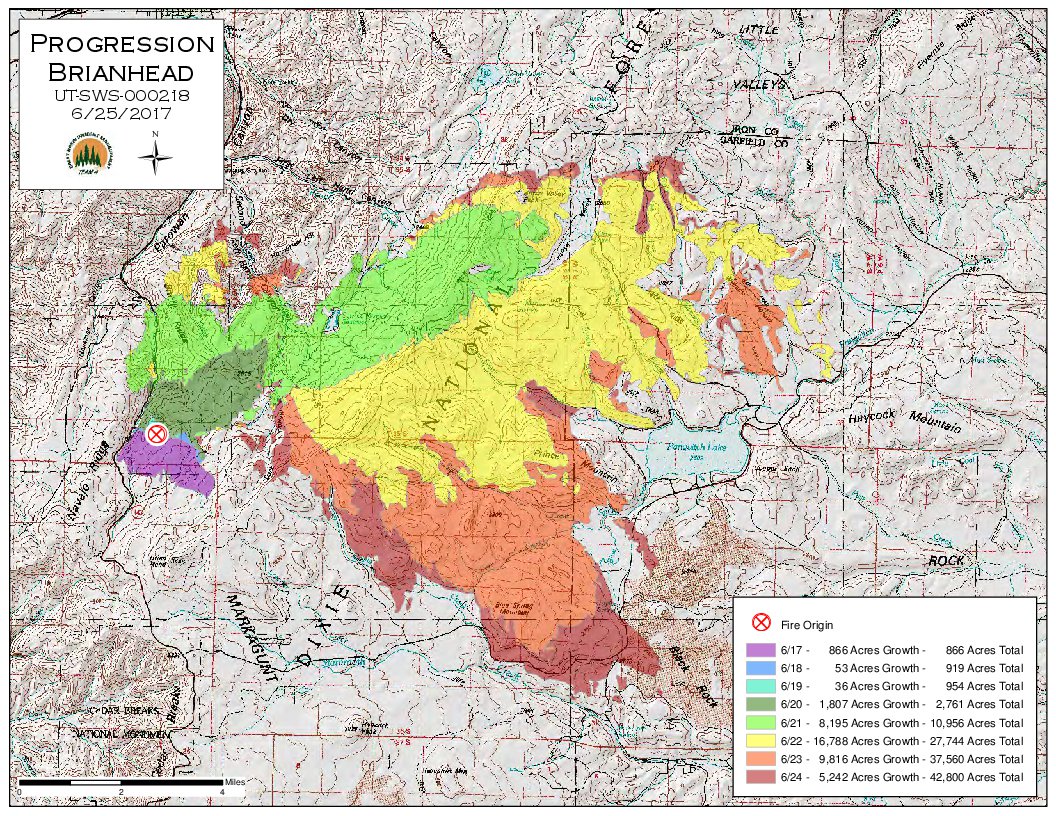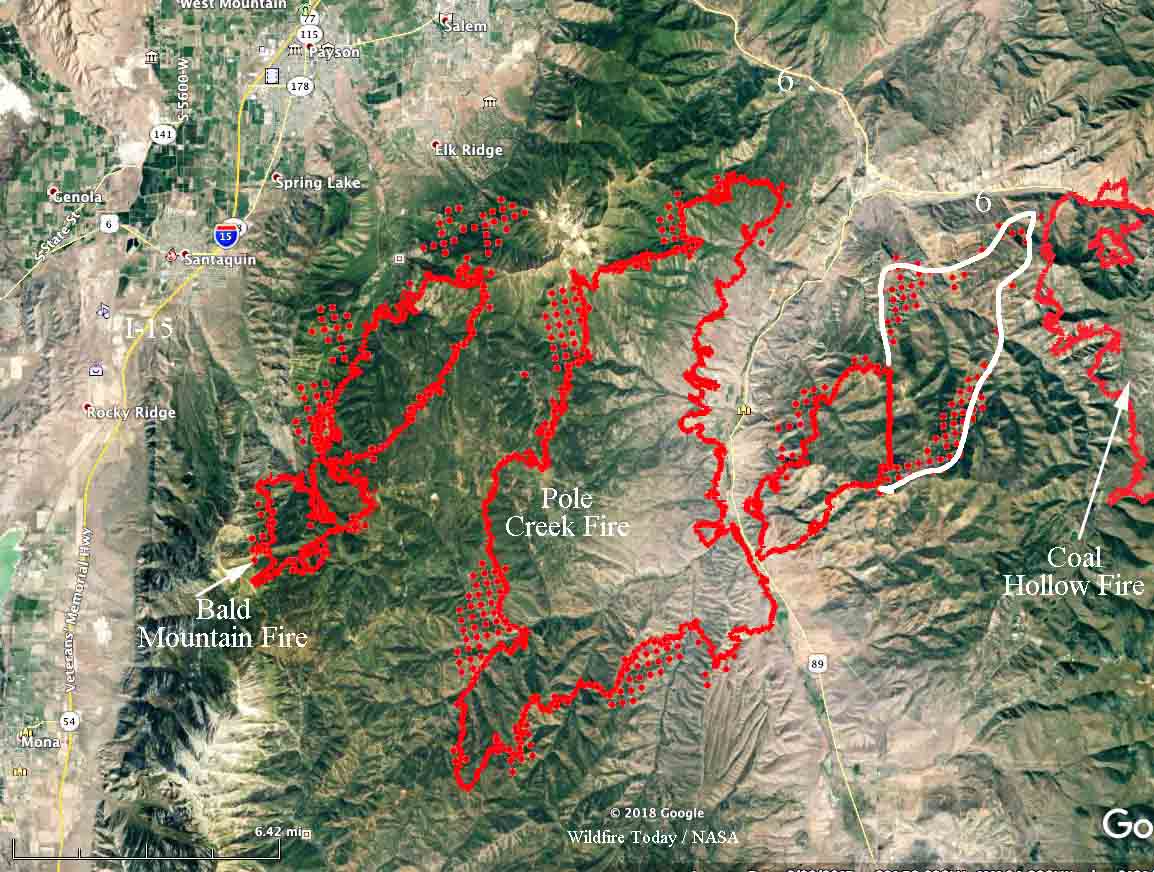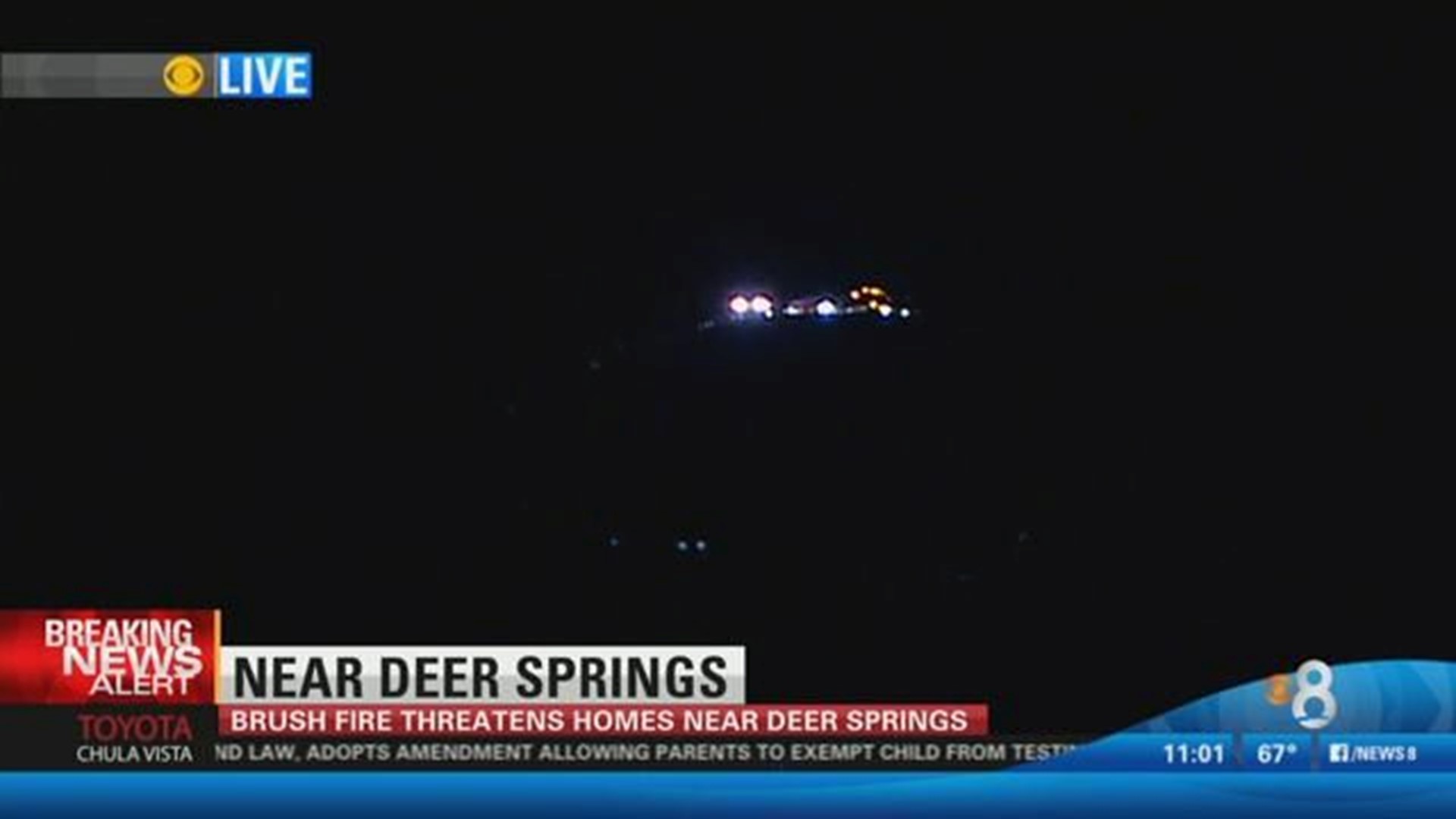Wildfires are an increasingly pressing concern across the Western United States, and Utah is no stranger to their devastating power. Among the significant blazes that have captured public attention, the Deer Springs Fire stands out as a stark reminder of nature's unpredictable force and the critical importance of accurate, timely information. Understanding the progression of such events, especially through tools like a comprehensive Deer Springs Fire Utah map, is not just about tracking destruction; it's about safeguarding communities, managing resources, and informing future prevention efforts.
This article delves into the specifics of the Deer Springs Fire, exploring its origins, rapid growth, and the extensive efforts undertaken to contain it. We will examine how mapping technologies play a pivotal role in monitoring these incidents, providing essential data for emergency responders and the public alike. By focusing on the Deer Springs Fire in Kane County, we aim to shed light on the broader challenges of wildfire management in arid regions and the collective responsibility in mitigating their impact.
Table of Contents
- Understanding the Deer Springs Fire Incident
- Locating the Fire: The Deer Springs Fire Utah Map
- The Scale of Devastation: Acres Burned and Containment Efforts
- Human Impact and Environmental Consequences
- Fire Management and Response: Agencies Involved
- Lessons Learned and Future Preparedness
- Staying Informed: Reliable Sources for Wildfire Updates
- Beyond the Blaze: Recovery and Resilience
Understanding the Deer Springs Fire Incident
The Deer Springs Fire, a significant wildfire event in Southern Utah, emerged as a critical concern for residents and emergency services. Located approximately 8 miles north of Kanab, Utah, this incident quickly escalated, demanding immediate and coordinated responses from various agencies. Its rapid growth and proximity to populated areas underscored the inherent dangers of wildfires, particularly in regions prone to dry conditions and high winds.Early Stages and Initial Reports
The Deer Springs Fire erupted on a Sunday, with initial reports indicating a human cause. This immediate suspicion highlights a recurring theme in wildfire incidents across the Western United States, where human activity, whether intentional or accidental, often triggers these destructive events. On the same day it started, the Utah Wildfire Dashboard was updated, revealing that the Deer Springs Fire had already grown to approximately 9,117 acres. This initial measurement, five times larger than its size earlier that Sunday afternoon, signaled the fire's aggressive nature right from the outset. Bureau of Land Management (BLM) officials were quick to disseminate this crucial information, emphasizing the need for public awareness and caution. The incident type category for the Deer Springs Fire was immediately classified, allowing for a structured response. Early observations from satellite imagery, such as descriptive text narratives for smoke/dust observed through April 25, 2025, 6:05 p.m., provide a glimpse into the sophisticated monitoring systems employed to track these blazes. While the provided date for satellite imagery seems to be a future date (April 25, 2025), it likely refers to the ongoing nature of such monitoring capabilities or a placeholder for future analysis, emphasizing the long-term data collection for understanding fire behavior.The Rapid Expansion of the Blaze
The growth of the Deer Springs Fire was nothing short of alarming. From its initial measurement of 9,117 acres on Sunday, it continued to expand dramatically. By Monday, June 14, at 4:30 p.m., the fire had increased from 11,000 acres to nearly 12,000 acres by Tuesday. This rapid expansion transformed it into the largest wildfire in the state at that time, as reported by ABC4, a local news outlet in Kane County, Utah. The sheer scale of the blaze, covering approximately 15,000 acres in less than 48 hours according to state fire officials, underscored the challenges faced by firefighting crews. The smoke from the Deer Springs Fire, along with other massive wildfires, began to blanket other areas of Southern Utah, including Cedar City and St. George, by Tuesday. This widespread smoke impact is a common consequence of large wildfires, affecting air quality and visibility for hundreds of miles, posing health risks to vulnerable populations. The relentless progression of the fire, despite aggressive containment efforts, highlighted the difficult terrain and environmental conditions, such as drought, that often fuel such intense blazes. The mention of "drought hit not much green was left by time November hit" in the provided data, though possibly referring to a general condition or another context, serves as a reminder of the parched landscapes that are highly susceptible to rapid fire spread.Locating the Fire: The Deer Springs Fire Utah Map
For residents, emergency services, and even curious onlookers, understanding the precise location and spread of a wildfire is paramount. This is where a detailed Deer Springs Fire Utah map becomes an indispensable tool. These maps are not static images but dynamic, constantly updated representations of the fire's footprint, intensity, and progression.Geographical Context: Kane County and Kanab
The Deer Springs Fire was centered in Kane County, Utah, specifically about 8 miles north of Kanab. This region is characterized by its rugged, arid landscape, often featuring dense brush and timber, which can act as significant fuel sources for wildfires. Kanab, a city in Southern Utah, serves as a hub for tourism due to its proximity to national parks and monuments, making the fire's impact a concern for both residents and visitors. The geographic context is crucial for understanding the fire's behavior. Factors like elevation, wind patterns, and the type of vegetation present all influence how a fire spreads. A comprehensive Deer Springs Fire Utah map would overlay these geographical features with the fire's boundaries, providing critical insights for strategizing containment efforts and predicting future spread. The BLM, which manages over 245 million acres of public land primarily in 12 western states including Alaska, plays a significant role in managing these landscapes and responding to incidents like the Deer Springs Fire.Interactive Mapping Tools and Resources
In the digital age, tracking wildfires has become highly sophisticated, largely due to interactive mapping tools. The "Utah wildfire dashboard" is a prime example of such a resource, providing real-time updates on fire incidents across the state. These dashboards typically allow users to "monitor fire spread, intensity, and lightning strikes," offering a comprehensive overview. The ability to "track wildfires & smoke across Utah" through these platforms is invaluable for public safety. An interactive Deer Springs Fire Utah map would typically feature:- Fire Perimeter: Constantly updated boundaries of the fire.
- Hotspots: Areas of intense heat, often indicating active burning.
- Smoke Plumes: Visual representations of smoke dispersion, crucial for air quality alerts.
- Topography: Overlay of elevation and terrain, which influences fire behavior.
- Infrastructure: Roads, communities, and critical infrastructure at risk.
- Containment Lines: Areas where firefighters have established control.
The Scale of Devastation: Acres Burned and Containment Efforts
The Deer Springs Fire quickly became the largest wildfire in Utah, a testament to its destructive potential and the challenging conditions under which firefighters operated. The progression of its size tells a stark story:- Sunday Evening Update: Last measured at 11,783 acres.
- Tuesday: Increased from 11,000 acres to nearly 12,000 acres.
- Less than 48 hours (from start): Grew to cover some 15,000 acres.
Human Impact and Environmental Consequences
Wildfires like the Deer Springs Fire have profound impacts that extend far beyond the immediate flames. For communities in Southern Utah, the fire presented immediate threats to safety and property. Evacuation orders, road closures, and the pervasive smoke that blanketed areas like Cedar City and St. George disrupted daily life and posed significant health risks, particularly for individuals with respiratory conditions. The psychological toll on residents, living under the shadow of a massive and unpredictable blaze, cannot be overstated. The threat of losing homes, livelihoods, and cherished landscapes creates immense stress and anxiety. Environmentally, the consequences are multifaceted. The destruction of vegetation, including forests and rangelands, alters ecosystems dramatically. While some ecosystems are adapted to fire and can recover, the intensity and frequency of modern wildfires often exceed natural regeneration capacities. The Deer Springs area, known for its natural beauty and wildlife, likely saw significant habitat destruction. The data mentions "The deer around here really love it and i have seen more than one big buck bedding in it, Lots of trails through it and lots of beds," which, while from a hunting context, underscores the presence of wildlife. Such fires displace animals, destroy their food sources, and can lead to long-term ecological shifts. Soil erosion post-fire is another major concern, especially during subsequent rainfall, leading to mudslides and water quality issues. The long-term recovery of these natural systems can take decades, if not centuries.Fire Management and Response: Agencies Involved
Responding to a wildfire of the Deer Springs Fire's scale requires a highly coordinated effort involving multiple agencies at local, state, and federal levels. These agencies bring diverse expertise and resources to bear on the incident. Key players in the response to the Deer Springs Fire included:- Bureau of Land Management (BLM): As the primary manager of the public lands where the fire occurred, the BLM plays a central role in wildfire suppression. Their mandate covers vast tracts of land in the Western U.S., making them a frontline responder to such incidents.
- Utah Fire Info: This state-level entity serves as a central hub for wildfire information and coordination within Utah. They are responsible for disseminating updates, managing resources, and often overseeing interagency cooperation.
- Local Fire Departments: Departments from Kane County and surrounding areas contribute personnel, equipment, and local knowledge to the incident.
- State Agencies: Various state departments, including forestry and emergency management, provide support, resources, and policy guidance.
- ABC4 News (and other media outlets): While not a response agency, news organizations like ABC4 play a crucial role in public information dissemination, relaying updates from official sources to the affected communities.
Lessons Learned and Future Preparedness
Every major wildfire offers critical lessons that inform future preparedness and mitigation strategies. The Deer Springs Fire is no exception. Its rapid growth, suspected human cause, and significant acreage burned highlight several key areas for focus:- Wildfire Prevention: The suspected human cause of the Deer Springs Fire underscores the paramount importance of public education on fire safety. Simple actions, like properly extinguishing campfires, avoiding sparks from vehicles, and adhering to fire restrictions, can prevent the vast majority of human-caused wildfires.
- Drought and Climate Change: The mention of "drought hit not much green was left" serves as a stark reminder of how increasingly dry conditions, exacerbated by climate change, create a perfect environment for large, intense fires. Long-term strategies must address climate resilience and ecosystem health.
- Early Detection and Rapid Response: The ability to quickly detect and respond to new ignitions is crucial in preventing small fires from becoming massive blazes. Continued investment in surveillance technologies, ground resources, and aerial assets is vital.
- Community Preparedness: Empowering communities to be "fire-adapted" through defensible space programs, evacuation planning, and clear communication channels is essential for minimizing risk to life and property.
- Interagency Coordination: The success of managing complex incidents like the Deer Springs Fire relies heavily on seamless coordination between federal, state, and local agencies. Continuous training and joint exercises strengthen these critical partnerships.
Staying Informed: Reliable Sources for Wildfire Updates
In times of crisis, accurate and timely information is invaluable. For wildfires, relying on official and verified sources is paramount to ensure personal safety and make informed decisions. When seeking updates on incidents like the Deer Springs Fire, it is crucial to consult platforms that provide real-time, expert-verified data. Recommended sources for tracking wildfires and obtaining reliable information include:- Official Government Wildfire Dashboards: Platforms like the "Utah wildfire dashboard" are specifically designed to provide comprehensive, up-to-the-minute information directly from fire management agencies. These dashboards often feature interactive maps, incident updates, and public safety alerts.
- Bureau of Land Management (BLM) and Forest Service Websites: These federal agencies are primary responders to wildfires on public lands and often post detailed incident reports, fact sheets, and press releases. The "attached fact sheet" mentioned in the data is a typical example of such detailed information.
- Local Emergency Management Agencies: County-level emergency services (e.g., Kane County, Utah) often provide localized updates, evacuation orders, and resource information relevant to their specific communities.
- Reputable News Outlets: While not primary sources of raw data, established news organizations like ABC4, which reported extensively on the Deer Springs Fire, play a vital role in synthesizing information from official channels and disseminating it to the broader public. Always cross-reference information with official government sources.
- InciWeb: This interagency incident management system provides a single source for incident information on large wildfires, including maps, photos, and daily updates.
Beyond the Blaze: Recovery and Resilience
Once the flames subside and containment reaches its peak, the long and arduous journey of recovery begins. The damage wrought by the Deer Springs Fire in Kane County, Utah, as seen from the air, underscores the scale of the task ahead. Recovery efforts are multifaceted, encompassing ecological restoration, community rebuilding, and psychological healing. Ecological recovery involves rehabilitating burned landscapes. This can include:- Erosion Control: Implementing measures like seeding and mulching to prevent soil erosion, especially on steep slopes.
- Reforestation: Planting new trees and native vegetation in severely burned areas, though this is a long-term process.
- Habitat Restoration: Efforts to restore critical habitats for wildlife, allowing species to return and thrive.
- Mental Health Support: Providing resources for individuals and communities grappling with the trauma and stress of wildfires.
- Economic Recovery: Supporting local businesses and industries impacted by the fire, particularly those reliant on tourism or natural resources.
- Long-term Planning: Developing and implementing strategies for living with fire, including land-use planning that considers wildfire risk and community-wide defensible space initiatives.
Conclusion
The Deer Springs Fire in Kane County, Utah, serves as a powerful illustration of the challenges posed by wildfires in the American West. From its rapid ignition and spread, consuming nearly 15,000 acres, to the extensive efforts by the BLM and other agencies to achieve 70% containment, this incident highlights the critical need for vigilance, preparedness, and accurate information. The role of a detailed Deer Springs Fire Utah map, whether through official dashboards or interactive tools, proved indispensable in tracking the blaze and informing response strategies. As we move forward, the lessons learned from the Deer Springs Fire underscore the importance of both individual and collective responsibility in preventing human-caused ignitions and adapting to a landscape increasingly shaped by drought and changing climate patterns. Understanding the dynamics of these fires, utilizing reliable information sources, and investing in robust fire management systems are not merely technical requirements; they are fundamental to safeguarding lives, protecting property, and preserving the natural beauty of regions like Southern Utah. We encourage you to stay informed about wildfire activity in your area by regularly checking official sources like the Utah Wildfire Dashboard and local emergency management websites. Your awareness and adherence to fire safety guidelines can make a significant difference in preventing future incidents. What are your thoughts on wildfire preparedness in your community? Share your insights and experiences in the comments below, and consider exploring other articles on our site for more information on environmental safety and community resilience.


